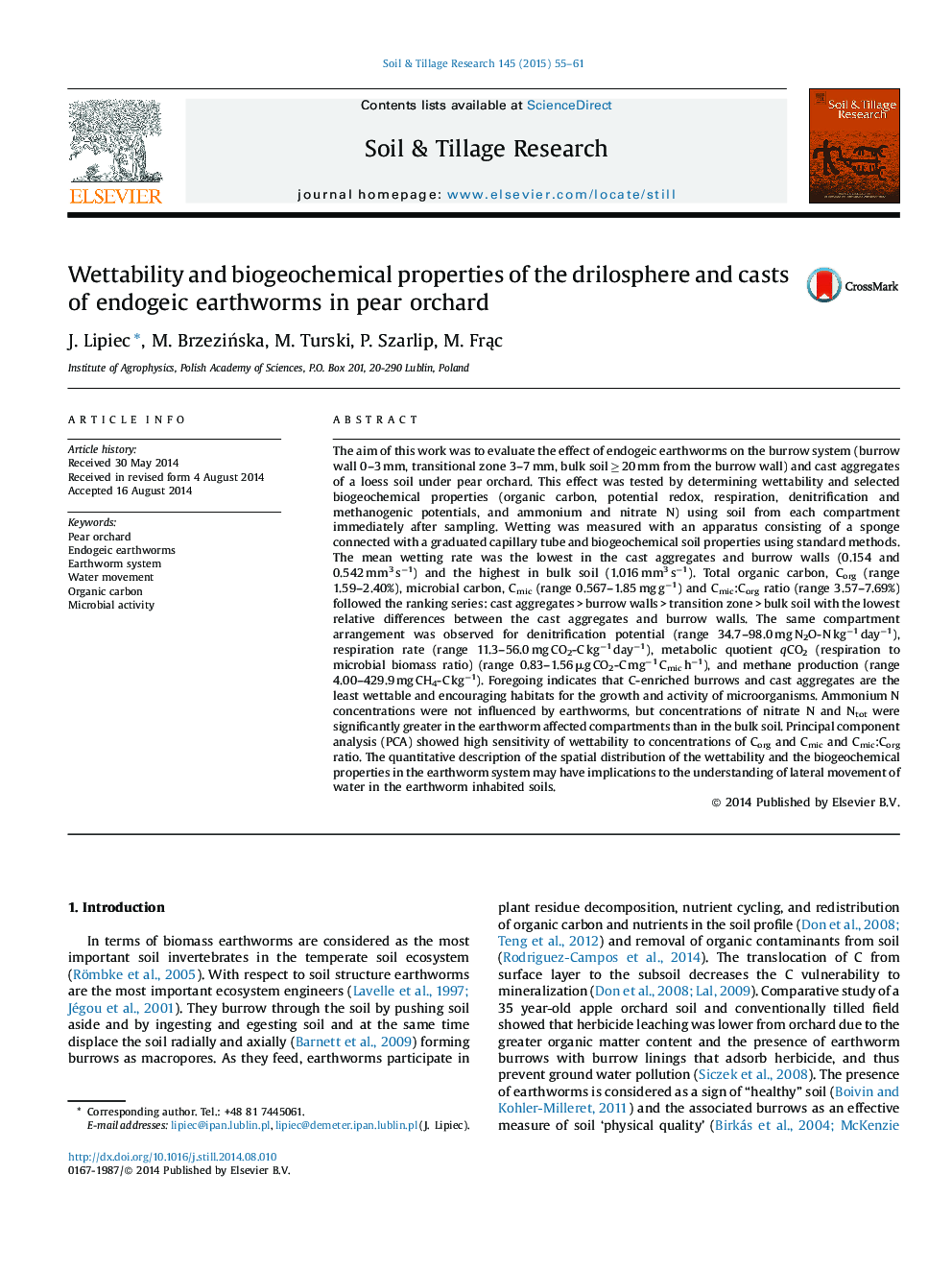| Article ID | Journal | Published Year | Pages | File Type |
|---|---|---|---|---|
| 305638 | Soil and Tillage Research | 2015 | 7 Pages |
•Wettability was lowest in cast aggregates and burrow walls and highest in bulk soil.•Lowest wettability in casts corresponds with largest concentrations of Corg and Cmic.•C-enriched burrows and casts encouraged the growth and activity of microorganisms.•Cmic compared to Corg reflects better microbial changes in the burrow system.•Nitrate N increased in the earthworm affected compartments compared to bulk soil.
The aim of this work was to evaluate the effect of endogeic earthworms on the burrow system (burrow wall 0–3 mm, transitional zone 3–7 mm, bulk soil ≥ 20 mm from the burrow wall) and cast aggregates of a loess soil under pear orchard. This effect was tested by determining wettability and selected biogeochemical properties (organic carbon, potential redox, respiration, denitrification and methanogenic potentials, and ammonium and nitrate N) using soil from each compartment immediately after sampling. Wetting was measured with an apparatus consisting of a sponge connected with a graduated capillary tube and biogeochemical soil properties using standard methods. The mean wetting rate was the lowest in the cast aggregates and burrow walls (0.154 and 0.542 mm3 s−1) and the highest in bulk soil (1.016 mm3 s−1). Total organic carbon, Corg (range 1.59–2.40%), microbial carbon, Cmic (range 0.567–1.85 mg g−1) and Cmic:Corg ratio (range 3.57–7.69%) followed the ranking series: cast aggregates > burrow walls > transition zone > bulk soil with the lowest relative differences between the cast aggregates and burrow walls. The same compartment arrangement was observed for denitrification potential (range 34.7–98.0 mg N2O-N kg−1 day−1), respiration rate (range 11.3–56.0 mg CO2-C kg−1 day−1), metabolic quotient qCO2 (respiration to microbial biomass ratio) (range 0.83–1.56 μg CO2-C mg−1 Cmic h−1), and methane production (range 4.00–429.9 mg CH4-C kg−1). Foregoing indicates that C-enriched burrows and cast aggregates are the least wettable and encouraging habitats for the growth and activity of microorganisms. Ammonium N concentrations were not influenced by earthworms, but concentrations of nitrate N and Ntot were significantly greater in the earthworm affected compartments than in the bulk soil. Principal component analysis (PCA) showed high sensitivity of wettability to concentrations of Corg and Cmic and Cmic:Corg ratio. The quantitative description of the spatial distribution of the wettability and the biogeochemical properties in the earthworm system may have implications to the understanding of lateral movement of water in the earthworm inhabited soils.
